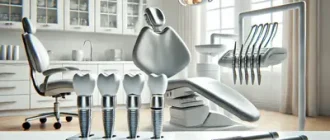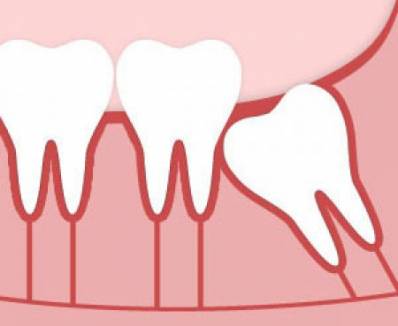Have you ever wondered if there are alternatives to bone grafting for dental implants? The short answer is yes, and the options might be more varied and accessible than you think. Let’s dive deep into the topic and explore the best alternatives to traditional bone grafting, their benefits, and what modern dental practices offer for patients needing a solid foundation for their implants.
Why Do Dental Implants Need Bone Support?
Before discussing alternatives, it’s crucial to understand why bone grafting is often recommended in the first place. Dental implants require a stable base to support the new tooth, much like how a house needs a solid foundation. Bone loss in the jaw can occur due to factors such as gum disease, tooth loss, or even prolonged denture use. In fact, up to 25% of jawbone can be lost within the first year of losing a tooth (source). Therefore, bone grafting has been a conventional approach to help build this structure back up.
What Are the Alternatives to Traditional Bone Grafts?
1. Sinus Lift
If you are missing teeth in your upper jaw, you may have heard of a procedure called a sinus lift. A sinus lift involves adding bone below the sinus to make space for a dental implant. The main advantage here is that it utilizes your own anatomy to create the volume needed. Many patients find this approach preferable if they lack upper jawbone height.
Did you know? Sinus lifts have a success rate of 94% to 96%, making them a reliable alternative to traditional bone grafting.
2. Ridge Expansion
Sometimes, the jaw isn’t wide enough for an implant. A ridge expansion involves splitting the jawbone and adding material to widen it, providing a broader base for dental implants. It’s particularly useful for those with moderate bone loss but not enough for a major graft.
While it sounds invasive, the procedure has been refined over the years and is seen as a practical alternative to full bone grafting.
3. All-on-4 Technique
For patients considering multiple dental implants, the All-on-4 technique offers an innovative solution that often circumvents the need for bone grafts altogether. This procedure uses four strategically placed implants to support a full arch of replacement teeth. The implants are placed at angles that leverage existing bone density, meaning many patients can skip the bone grafting process.
This approach is also popular due to its shorter recovery time and lower overall cost compared to undergoing multiple individual implants with bone grafting. On average, All-on-4 procedures can range from $15,000 to $30,000 per arch, depending on the clinic and specific circumstances.
4. Zygomatic Implants
When conventional bone grafting isn’t an option, zygomatic implants are a lesser-known but highly effective alternative. Instead of anchoring into the jawbone, these longer implants are placed into the zygomatic (cheek) bone. This technique is particularly helpful for patients with significant upper jaw bone loss. It’s an advanced solution, but one that offers promising results without the additional surgery needed for bone grafting.
5. Bone Morphogenetic Proteins (BMPs)
For those who prefer a biological approach, Bone Morphogenetic Proteins (BMPs) offer an exciting alternative. BMPs stimulate the body’s cells to form new bone, essentially encouraging your own body to create the required volume. BMPs are still being researched for optimal efficacy, but they’ve shown promise in reducing the need for extensive bone grafts in some cases. Although BMP treatments are more expensive, averaging $5,000 to $7,000 per application, many patients find the natural approach worthwhile.
Pros and Cons: Are These Alternatives for Everyone?
| Alternative | Pros | Cons |
|---|---|---|
| Sinus Lift | High success rate, effective for upper jaw | Invasive, long healing time |
| Ridge Expansion | Increases jaw width, suitable for moderate bone loss | Possible complications with bone splitting |
| All-on-4 Technique | Avoids grafting, faster recovery | High cost per arch, not ideal for everyone |
| Zygomatic Implants | Effective for severe bone loss, no grafting needed | Complex procedure, requires experienced surgeon |
| BMPs | Encourages natural bone growth | High cost, still under study for optimal results |
Not all patients are suitable candidates for each of these alternatives. Factors like overall health, age, and the amount of bone loss influence which alternative might be right for you. A conversation with your oral surgeon will provide the best direction based on your unique situation.
Frequently Asked Questions About Bone Graft Alternatives
Can I Avoid Bone Grafts Altogether?
In many cases, yes! Alternatives like the All-on-4 technique or zygomatic implants can help circumvent the need for traditional bone grafts. However, this will depend on the extent of your bone loss and your individual circumstances.
Are Bone Graft Alternatives Safe?
Absolutely. All procedures discussed have undergone extensive clinical trials and are performed by trained oral surgeons. With success rates as high as 95%, these methods are viable options for patients with inadequate bone density.
How Long Does Recovery Take Compared to Bone Grafting?
Bone grafting recovery can take anywhere from 3 to 9 months, depending on how well the graft integrates with your natural bone. Alternatives like zygomatic implants or the All-on-4 method can significantly reduce this time, often allowing implant placement and tooth restoration within a few months or even immediately.
Advice From Our Editorial Team
Selecting the right treatment for dental implants can feel overwhelming, but understanding your options is the first step. Talk to your oral surgeon about your unique needs and preferences—the right choice is out there for you. Remember that advancements in dental technology have made what seemed impossible only a decade ago very achievable today. Stay informed, weigh your options carefully, and always be prepared to add a pinch of salt to the marketing hype around certain “miracle” alternatives.






